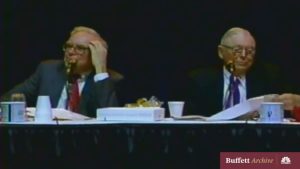Soon after March’s sudden bank failures startled markets, April kicked off with surprise oil-production cuts that left investors worried about potential ripple effects on still high inflation.
Rick Rieder, BlackRock’s chief investment officer of global fixed income and head of the firm’s global allocation investment team, said in a phone interview that when he saw news of the unexpected oil-production cuts by OPEC+, his first thought was, “here’s another log on the fire,” when it’s already “so hard” to bring down inflation.
Crude prices
CL00,
CL.1,
in the U.S. jumped Monday after OPEC+, a group of oil-producing countries including Saudi Arabia, surprised markets by announcing on Sunday plans to reduce production by more than one million barrels a day beginning in May until the end of 2023.
Read: 6 things investors need to know about the surprise OPEC+ production cuts
Rieder worried that’s “inflationary” in the near term, with the potential to lead to higher prices for consumers at the gas pump and a pullback in their spending elsewhere in the economy. In his view, the announcement also seemed “counterintuitive” considering China’s been reopening its economy, which should translate into growth in energy demand.
The Federal Reserve has been raising interest rates in an effort to bring high inflation under control, but after last month’s sudden collapse of Silicon Valley Bank and Signature Bank, the bond market began adjusting for potential rate cuts even as the cost of living remains elevated.
Treasury yields dropped as investors feared the Fed’s aggressive monetary policy was creating cracks in the financial system, and that the banking stress increased the probability of recession.
Read: Two-year Treasury yields see biggest monthly drop since 2008 after bank turmoil
Rieder expects “sticky inflation,” potentially exacerbated by higher oil prices, means the Fed may continue to “talk tough on inflation.” He thinks the Fed may pause its rate hikes “at a restrictive level” after doing one more at its next policy meeting, which is scheduled for early May.
Fed-funds futures on Tuesday afternoon pointed to a 44.3% chance of the central bank raising its benchmark rate by a quarter percentage point to a target range of 5% to 5.25% in May, and 55.7% odds of the Fed pausing, according to the CME FedWatch Tool, at last check.
Traders are also pricing in potential rate cuts later this year.
Rate cuts coming?
While Rieder’s base case isn’t for rate cuts in 2023, he sees some risk of a credit contraction alongside banking issues becoming “acute.”
In the U.S, “I think we’re going into a period where the economy is going to slow, he said. Against this backdrop, “I think they’re going to cut rates in 2024,” with a chance the Fed could begin doing so in December, said Rieder.
In his view, once the Fed does begin cutting rates, it probably won’t be in a “smooth line” of decreases of a quarter percentage point at a time. “They’re going to drop them very quickly,” he expects, saying that’s what he’s seen being priced into the market after the “mini banking crisis.”
Read: What ‘unprecedented’ volatility in the $24 trillion Treasury bond market looks like
The yield on the two-year Treasury note sank 73.5 basis points in March to 4.060%, for its biggest monthly decline since January 2008 based on 3 p.m. Eastern time levels, according to Dow Jones Market Data. The 2-year Treasury yield
TMUBMUSD02Y,
fell Tuesday to 3.831%.
The recent drop in Treasury yields makes sense to some extent based on the potential for banking issues to possibly shave off between a quarter and three quarters of a percent from gross domestic product, according to Rieder.
‘Getting paid to be patient’
Rieder said he likes the front end of the Treasury market’s yield curve and short-term debt such as commercial paper, which he’s seen yielding around 5% to 6%.
“I quite frankly like buying commercial paper and T-bills,” he said. “In today’s environment, you’re getting paid to be patient,” Rieder said of the “attractive” income from short-term debt. In an economic slowdown, he questioned how fixed-income yields might stack up against equity returns in 2023.
The yield on the three-month Treasury bill
TMUBMUSD03M,
was trading around 4.8% Tuesday afternoon, FactSet data show, at last check. That’s above the yield for the 10-year Treasury note
TMUBMUSD10Y,
which ended Tuesday at 3.335% Tuesday, according to Dow Jones Market Data.
Rieder saw the 10-year note as “not that interesting” through 3.5%, but he said slightly above that level was “reasonable” and that “if the economy slows, it’s going to work as a hedge for you.” That’s why he’s using a “barbell” approach, saying “I like the very short end” of the yield curve but also some exposure “at the 10-year point.”
In U.S. corporate credit markets, Rieder said he prefers investment-grade bonds over high-yield, or junk, bonds. He said that a flight to higher quality within high-yield debt left spreads on BB-rated bonds looking “mediocre.”
Also within fixed income, Rieder said he’s seen buying opportunities in some emerging-market sovereign debt.
Rieder described his exposure to commercial real estate debt as “light” relative to the past, saying “I feel a lot more comfortable” with credit. While offices have been under pressure, he said other areas of commercial real estate, such as multifamily properties and hotels, have looked more attractive from a financing perspective.
Read: Commercial real estate, smaller banks face ‘doom loop’ risk, warns Capital Economics
Also see: Commercial mortgages are a big $3.1 trillion share of bank holdings: Goldman Sachs
As for equities, Rieder said he likes parts of areas such as technology, healthcare and defense, as well as “quality growers that are less cyclical,” including some consumer-staples stocks. And he said the recent stress around Credit Suisse Group created buying opportunities in European bank stocks at “a fraction of book value.”
Meanwhile, the U.S. stock market closed lower Tuesday, with the Dow Jones Industrial Average
DJIA,
and S&P 500
SPX,
each falling 0.6% while the Nasdaq Composite
COMP,
slid 0.5%, according to FactSet data.
Stocks rose last month despite the regional bank failures, with the tech-heavy Nasdaq booking its best quarter since the second quarter of 2020.
In the coming months, the market faces worries beyond rate hikes and the recent bank failures. “I would be blown away if the debt ceiling didn’t become an issue of significant concern over the next few months given the way the politics seem to be shaping up,” said Rieder.
This post was originally published on Market Watch





